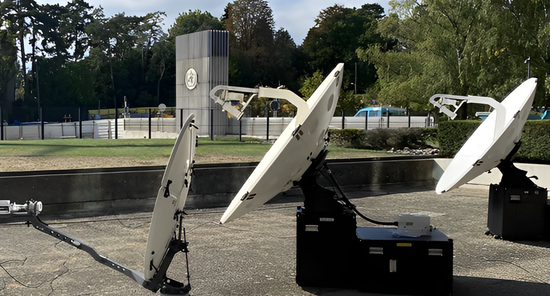
VSAT (“Very Small Aperture Terminal’) enables two-way satellite communications and data transfer from and to everywhere around the world. WHO uses mobile VSATs (Quick Deployment Kit) in areas with underserved or unserved terrestrial communications infrastructure , including remote zones and non-permissive environments such as war zones. It is crucial for our staff in the field to know how to install our VSAT QDKs to have communication and data transfer in all possible conditions.
Language: English
English
Health topic
Course information
Overview: VSAT QDKs enable two-way communications in all conditions, avoiding dependence on local networks, which are often underperforming and/or unstable. They also enable the establishment of offices in remote areas and in non-permissive environments such as war zones. In the first part of the course, participants will be introduced to the basic concepts of satellite communications, in the second part to the basic concepts of satellite transmission, and in the third part they will have a step-by-step guide on how to set up three different models of WHO VSAT QDKs. The course is intended for WHO logisticians and any other person responsible for communications who works or may work in the field under conditions that require the installation of independent communication systems due to the absence or instability of existing communication systems.
Course duration: Approximately 2 hours.
Certificates: : A Certificate of Achievement will be available to participants who score at least 80% of the total points available across all of the quizzes. Participants who receive a Certificate of Achievement can also download an Open Badge for this course. Click here to learn how.
What you'll learn
- Set up, line up, dismantle, and pack three different VSAT Flyaway units used by WHO in the field
- Recall history, outline connectivity, list satellite orbits and challenges of satellite communications
- Describe the spectrum and frequency band used for transmission in satellite communications and recall carrier parameters, power calculation and spectrum analysis
Course contents
Module 1: Basic concepts for satellite communications:
By the end of this module, learners will describe satellite communication systems, including frequency spectrum, network topologies, and recall the function of each component of a Flyaway VSAT unit.Module 2: Basic concepts for satellites transmission basics:
By the end of this module, learners will recall the basics of satellite transmission, including carrier parameters, power calculation and spectrum analysis.Module 3: WHO VSAT QDKs instructions:
This Module guides the learners through a step-by-step description and demonstrations on how to set up, line up, dismantle and pack WHO VSAT QDKs.
Enroll me for this course
Certificate Requirements
- Gain a Record of Achievement by earning at least 80% of the maximum number of points from all graded assignments.
- Gain an Open Badge by completing the course.